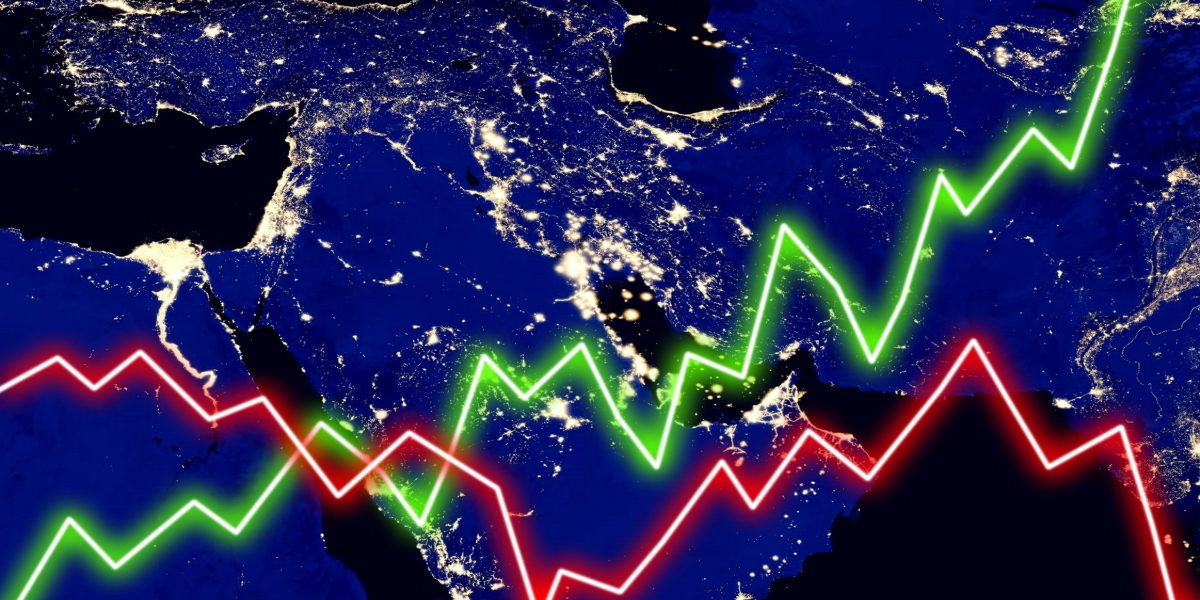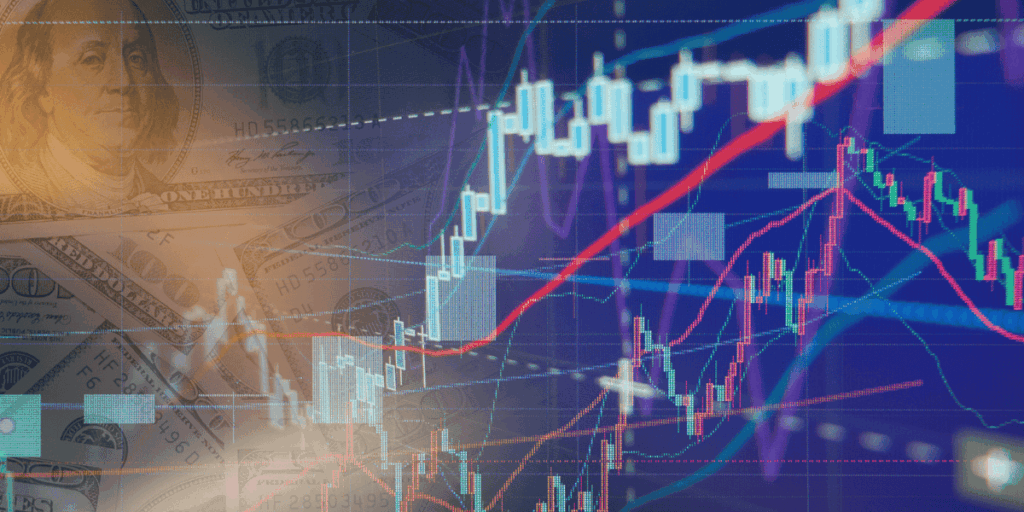For those of you who would prefer to listen:
The week started with a bang overseas. There was a revolution in Syria. President Bashar al-Assad’s regime fell to rebel forces. The 50-year reign of the Assad family in Syria has come to an abrupt end. Assad and his family have reportedly fled to Moscow, seeking asylum. This brought an end to the bloody and brutal 13-year Syrian civil war. What’s more, Assad’s biggest backers have been weakened significantly. Russia and Iran sit at the top of that list. Moscow spent significant financial and political capital to keep Assad in power during that civil war. Their investment just went up in flames.
Rebels from Hayat Tahrir Al-Sham (HTS), a Sunni al Qaeda offshoot, have taken control of Syria. Complicating things is the fact that HTS is a designated Terrorist organization according to the United States.
What’s next? Of course, the answer is anyone’s guess. But this is how we’re thinking about it:
HTS has attempted to moderate its jihadist image in recent years. This, according to our Washington sources. That said, we must remember the Taliban also promised an inclusive society when taking back control of Afghanistan in 2021. Things haven’t exactly worked out that way. The fact is, Syria has been chaotic for over a decade. The country’s GDP plummeted nearly 80% from 2010 to 2020. It has also experienced skyrocketing inflation. Global investment fled the country. The black-market trade exploded in response. Drug trade and other lawless behavior was rampant. Refugees fled the country too, seeking safety in Europe, in Asia and America too. The World Bank estimates that 7 out of every 10 people in Syria live in poverty. It’s been a horrific period for the Syrian people.
Before the war, Agriculture and Oil accounted for half of Syria’s economic output. Trade and commerce have always been a large part of the Syrian Economy, considering its strategic location along the Mediterranean. Before the civil war, Syria produced nearly 400K barrels of Oil per day. That number has been cut by 90%. Syria has not exported Oil since late 2010. Syria doesn’t pose any immediate threat to Oil or gasoline prices since the country is no longer a meaningful player in the global Oil supply. That said, further unrest in the region could absolutely disrupt Oil production and distribution, which would send prices higher.
The Syrian Democratic Forces alliance of Kurdish and Arab militias, which is backed by the U.S. and its allies, controls most of the quarter of Syria with its largest oilfields. The Russian company Evro Polis had a contract with Syria’s government to protect other oilfields in exchange for a 25% share in Oil and gas production from the fields. The U.S. Treasury Department imposed sanctions on the Russian company in 2018. It’s been reported that this Oil is still under Russian military control.
There is no quick fix in Syria, that’s abundantly clear. All the rebel groups were united in ousting the Assad regime. However, in the absence of any power-sharing agreements, there now could be a fight for control. Groups could turn against each other. If that happens, there might be another exodus from Syria, which has already seen 5 Million of its citizens flee over the past decade. A good start is HTS stating this week it plans to make major reforms and embrace free markets. Syria joined China’s Belt & Road initiative in 2022. That could help rebuild its war-torn infrastructure. How the nation embraces China and the United States will be a critical tell for the path ahead.
One thing that is crystal clear: Iran has become extremely vulnerable.
In the first statement following Assad’s ouster, Iranian Supreme Leader Ayatollah Ali Khamenei insisted that his country is “powerful and strong” and vowed to replenish and expand its network of allies. Of course he said that. But it’s a pretty shallow claim. The truth is pretty clear. Iran is nothing like feared pre-October 7th of 2023.
Iran spent Billions of Dollars over the decades building a network of proxies. These were militias and governments that allowed it to exercise political and military influence across the Middle East and deter foreign attacks on its soil. The Iranian embassy in Damascus was looted immediately after the rebel takeover. It lost its major ally in the “axis of resistance” and the vital land connection to its Hezbollah proxy militia in Lebanon. In just a matter of weeks, the pillars of the Iranian alliance came crashing down.
It’s been said that Iranian leadership believed Hamas’s October 7th attack was a turning point in history. That’s proving to be true, but in the complete opposite direction from their intentions. Syria was Iran’s only state ally in the Middle East. These Syrian rebel forces are no ally of Iran.
The Oil Market has been tense but trading relatively stable. WTI headed into the weekend back over $70. Iran is the fourth-largest crude Oil producer in OPEC, with 4 Million barrels produced daily. Syria buys approximately 15% of Iran’s Oil. And most of it has been done on credit. Syria owes Iran over $40 Billion. Iran will likely never see that revenue.
Iran also asserts control over the Strait of Hormuz, the trading route that sees one-third of daily seaborne Oil and 15% of the total global supply. An act of desperation could see Iran shutting it off, sending the price of Oil skyrocketing above $100. This has long been a risk, considered small, but Iran now finds itself with few good options. It’s important to remember that Iran is opportunistic and is used to operating in unstable environments. Iran definitely plays the long game.
Russia has been humiliated by the Assad regime failure. Syria was considered the crown jewel of the Russian reemergence in the 21st century. The alliance provided warm water ports on the Mediterranean and strategic military bases. The Russian air and naval bases in Syria were central to Vladimir Putin’s push to build the Kremlin’s post-Cold War clout. According to our sources, Putin is fuming and fearful that Russia’s intelligence service didn’t spot the growing threat to Assad’s rule until it was too late.
Russia has now lost its foothold in the Middle East. The Syrian revolution is a major strategic loss for Russia. Moscow had been propping up the Assad regime for years, interfering in the Syrian civil war alongside the Iranians. This is a major blow to not only Russia’s regional influence, but its global prestige. Importantly, the Syrian military was trained and established by the Russians. The software governing the Syrian military is Russian. The new Syria could definitely become a neutral state that has good relations with both the U.S. and Russia. But the Syrian military would likely remain primarily Russian-oriented, at least for now.
Of course, Iran and Russia are still entangled in wars with Israel and Ukraine. Russia has been caught in the middle of Israel and Iran, claiming to be allies of both. But when it came down to it, at the expense of his relationship with Israel, Vladimir Putin threw his weight behind Iran which has been providing assistance in his war with Ukraine. The Israeli bombings have clearly weakened Tehran as well as its key ally, Lebanon’s Hezbollah. The timing of the Syrian revolution has been devastating to both.
Who benefits? Israel? Saudi? Turkey?
Israel for sure scored a strategic achievement with the breakup of the Iranian-led “axis of resistance”. That coalition has long been Israel’s greatest threat. The Israeli success in damaging Lebanon’s Hezbollah militia, which used to provide Assad with its most capable military support, is what opened the door for the Syrian rebels to overrun the Syrian military and Assad regime.
Our sources indicate the Israelis are still concerned about the rise of a Turkey-backed Sunni Islamist state on its borders. It may try to reclaim the Golan Heights, which Israel seized in 1967. They could then align with Hamas, the Palestinian militant group. Israel has been launching strikes in Syria and the Golan Heights this week in response.
Turkey openly supports the Syrian National Army militia and has backed the Syrian rebel forces for years. They’ve been in alignment with the United States here. But there is a faction of Syrian rebels where the U.S. and Turkey are on opposite sides; The Kurds. Both nations are in strategic discussions about it presently. From Turkey’s perspective, the new element of risk and peril is a complete collapse of the Syrian state. It wants to see a transition to a viable state that provides for the Syrian people. In a meeting Friday with Secretary of State Blinken, President Erdogan called on the international community to work together for the reconstruction of institutions in Syria. It’s also important to remember that Turkey is a NATO member. Turkey is stronger in the wake of the Syrian revolution.
Saudi Arabia has been a vocal voice this week calling for collaboration and calm throughout the Middle East. The Saudi kingdom is no friend of Assad’s. The Saudi’s and Qatar helped bankroll the Syrian rebels during the civil war. They are reportedly trying to prevent the Assad collapse from triggering a new wave of backlash against the region’s rulers. They fear a resurgence of extremist movements that fueled the Islamic State following the Arab Spring in 2011.
China has been cautious in its response to the rapid shifts in Syria. Even though the Asian nation was not directly involved in Syria’s civil war, like Russia and Iran, China had developed an alliance with Assad and his regime. China has blocked anti-Assad measures by the United Nations on numerous occasions over the years. China cares about economic ties more than anything else, in their own interests. China became Syria’s 3rd largest trading partner. Our sources believe HTS doesn’t see China as a close and trusted partner. But it is believed that China will seek to maintain engagement with the new Syrian government.
The Market and the rest of the world are definitely moving in anticipation of the transition at the White House. The President-elect hosted Canadian Prime Minister Trudeau at Mar-a-Lago. Tariff talk was on the menu.
He then flew to Paris to meet with embattled French President Macron. They celebrated Notre-Dame’s grand reopening. It was both historic and symbolic. While in France, Trump met with Zelensky. They reportedly discussed ways to end Russia-Ukraine war. Donald Trump is indeed back on center stage. He was named Time’s Person of the Year. Some say his attitude changed ahead of his second term. That’s of course unclear. What is clear is Trump keeps people guessing. That seems to have always been his way.
While wars escalate in the Middle East, China has increased its military exercises around Taiwan. China also launched an antitrust probe into Nvidia. That came a week after the U.S. increased the pressure on Chinese access to advanced semiconductors which fuel this Digital revolution. China is trying to find a path to economic dominance, but keeps getting blocked from accessing American innovation. The trade war which began during Trump’s first term is accelerating into his second.
The Middle East turmoil continues as Europe faces its own set of challenges. Both France and Germany are unsatisfied with leadership. The French people sent their Prime Minister packing. That hasn’t happened in 6 decades. German Chancellor Scholz faces a confidence vote of his own next week. That is expected to fail which would set the path for snap elections in February. Spain’s Prime Minister has struggled to pass a 2025 budget amid weak parliamentary support and corruption allegations. The European Union can’t get out of its own way. Its Economy is expected to grow less than 1% annually into 2040 without serious reforms. The British Pound fell again this week after Britain’s Economy shrunk for the second consecutive month. The Bond Market has attacked French debt. France now borrows at a higher rate than Greece. You read that right. That’s the Market indicating stress.
In the wake of the rebel forces re-taking Syrian control, countries from the United Kingdom to Greece moved quickly to freeze Syrian asylum seekers. Austria proposed for “orderly repatriations and deportations.” In Germany, which had over 700K Syrian asylum seekers at the end of last year, an idea was floated offering them €1,000 ($1,050) and a one-way flight back to Syria. Expect more activity on this theme ahead.
The outlook for foreign currencies has worsened. President Trump has said he plans to aggressively protect the Dollar’s global reserve currency status. The Market is making it clear there’s no doubt about that. International Stock Markets have substantially lagged the US for over a decade. Cryptocurrencies have also secured a preferred role in global markets.
Donald Trump sees Iran as America’s, and his, top enemy. He’s going after Iran with “maximum pressure”. The government in Tehran is left trying to figure out how to respond, and questions are being asked about the vulnerability of its leadership. Internal dissent is growing by the minute. But if things get worse, Iran may follow an old pattern of escalating its atomic activities, raising concerns that it may try to develop a nuclear weapon. That’s something both the US and an increasingly emboldened Israel have vowed will never be allowed to happen. Israeli Prime Minister Netanyahu definitely feels more comfortable with anticipated support from the new White House.
The rebel takeover of Syria has basically been ignored by the Market; At least for now. That’s largely due to the minimized economic impact and lack of implications for Oil. The International Energy Agency (IEA) just released its 2025 Outlook. The organization expects global demand to outpace supply by roughly 100K barrels per day next year. The IEA estimates 104.2 Million barrels will be produced daily and 104.3 Million consumed. The growth in Oil production next year will come mostly from non-OPEC countries because of ongoing production restraint on the part of OPEC+. OPEC production for next year is expected to be 26.7 Million barrels per day, led by Saudi Arabia, which is 11 Million of that. It is believed the Saudis could produce over 14 Million barrels per day, but have restrained output in order to keep prices stable.
The United States is expected to produce a record 13.5 Million barrels daily. President Trump would like to do more. The IEA expects US net crude imports to fall by 20% next year to their lowest levels since 1971. America’s Energy renaissance has driven fuel prices lower and national security higher. This has been such a difference maker compared to the 20th century when the United States was dependent on foreign Oil.
Inflation is still an issue. The November Consumer Price Index data showed the rate of price increases have somewhat stalled. November core CPI increased 0.3% month-over-month. That is the same rate as the previous 3 months and in line with consensus. The core rate strips out food and energy. The annualized core came in at 3.3%, also in line with consensus. To be clear, prices are still going up 3% per year. The cumulative increase since before Covid is nearly 30%. That was absolutely an election issue. The good news is rents increased at the slowest pace since January of 2021. That’s significant. The Market is now assigning a 95.3% probability for a ¼-point cut by the Fed next week following the CPI report. It was 65% a month ago.
But prices have not gone down, and there’s a definite possibility they start going back up. Bond yields went higher this week, sniffing it out. The Biden administration is reportedly considering fresh sanctions against Russia. That would target its Oil exports as well as the tanker fleet used to transport Russian Oil. The current White House is looking to squeeze the Kremlin’s war machine before Trump’s return. The new limits on the so-called shadow fleet could be unveiled in the coming weeks, according to our sources. It’s not just the U.S. The European Union is also discussing similar measures on Russia’s shadow fleet before the end of the year. On top of this, Ukraine said it struck a port in southern Russia, triggering a “massive” fire at an Oil facility in the Bryansk region. However, the strike has not affected Oil transit to Europe via Ukraine. That would have sent the price of Oil meaningfully higher. But the risk is certainly there.
It’s hard to remember a time when there was this much uncertainty around the world. There continues to be a massive rebellion against institutions and existing norms. We’re certainly seeing it at home. It’s happening darn near everywhere. Donald Trump’s return to the White House is being embraced as a disruptive force. Alliances, trade relations and the basic role of government is being tested. This isn’t new. It’s been brewing for years. The Arab Spring in 2011 and Brexit in 2016 have still yet to be resolved. Protest activity is picking back up. The world is indeed a complex place.
The Street estimates that are circulating indicate that Trump tariffs may cut S&P 500 earnings by 2.8%. That would almost certainly increase inflation next year. So far, tariffs have been used as a leverage tool for better trade terms. That seems to be the way the Market views it. But if enacted, they would certainly slow growth. What also seems clear, with all of the turmoil overseas, America is standing supreme on the global stage. Despite all the internal issues at home, our adversaries look much weaker than previously thought. The rest of the world still looks to the United States for leadership. The Market likes that. The Market likes that a lot.
Despite a 7-day sell-off on the Dow, the Stock Market remains near all-time highs. The Tech Titans continue to stand out in the lead. Record money flows have fueled the year-end rally. Demand for American stocks, American bonds and American Dollars is as strong as ever. The massive spending on Artificial Intelligence and the resiliency of America’s Economy has investors tightly embracing the Stock Market. With the rest of the world facing many a crisis, the Dow and S&P still stand above all else.
Have a nice weekend. We’ll be back, dark and early on Monday.
Mike






